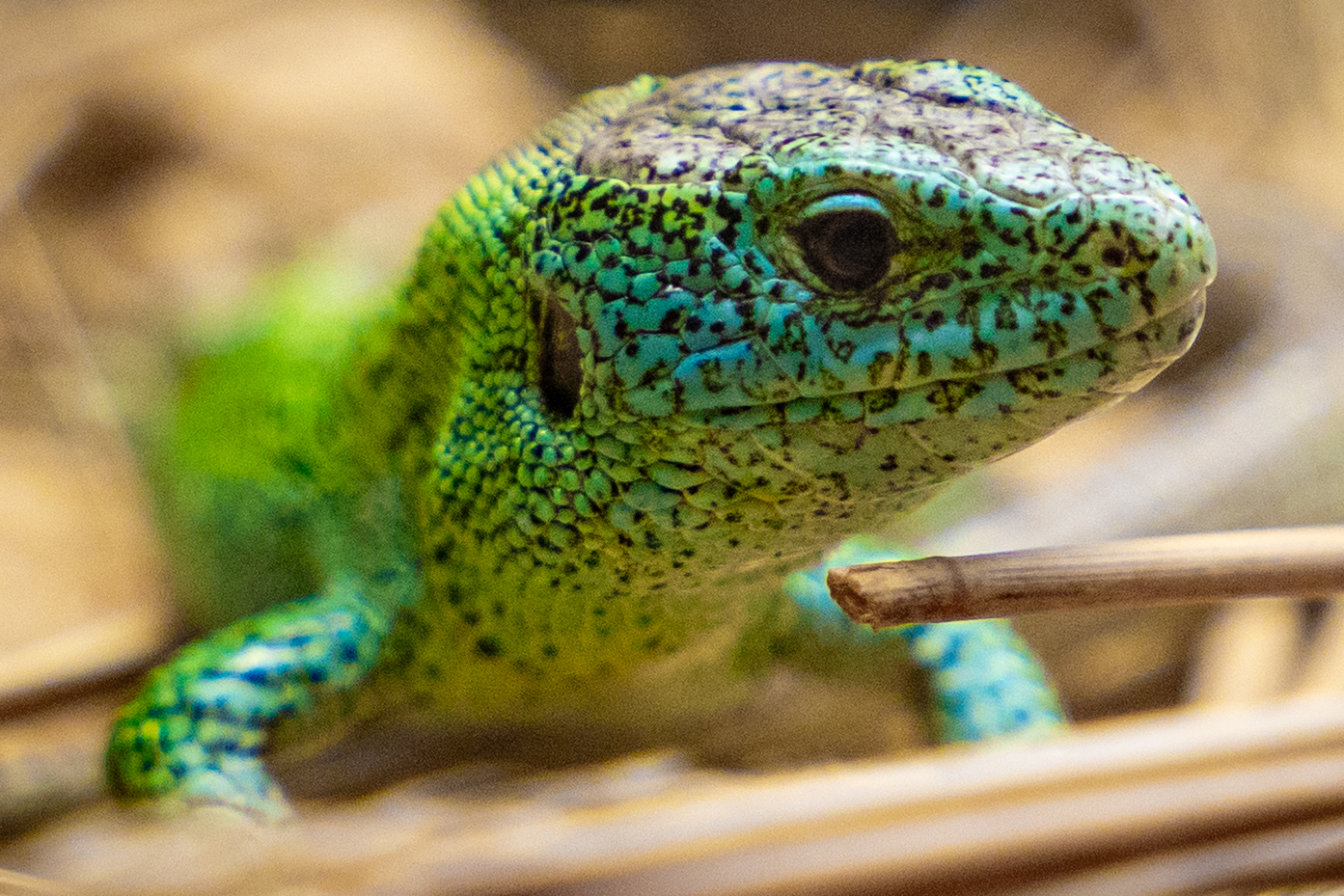
Sand lizards are distributed across most of Europe from the southern coast of Britain eastward across the continent to Lake Baikal in Russia. In the northern extremes of their distribution, they survive by inhabiting seaside heathlands where ground temperatures are elevated by the sun, using warm sand to thermoregulate and incubate their eggs.
In the UK, this species is now restricted to south and west England and a couple of sites in Wales, favouring sandy heathland habitats in Surrey, Dorset and Hampshire, and coastal sand dune systems in Merseyside.
Sand lizards are carnivorous, feeding primarily on various insects, spiders, grasshoppers and crickets, as well as slugs. They also occasionally consume fruit and flower heads.
Interesting facts!
- Male sand lizards develop spectacular bright green flanks during the spring breeding season to attract females. Outside the breeding season their vivid green colouring fades, though in some eastern populations males may remain green year-round.
- Sand lizards are the only native UK lizard species to lay eggs. Females typically lay a single clutch of between 6-14 eggs in late May or early June, burying them in loose sand in sunny locations where they are incubated by the warmth of the ground for around 50-55 days.
- These lizards can self-amputate their tails as a defence mechanism when threatened – the detached tail continues to wiggle on the ground for several minutes, distracting predators whilst the lizard escapes.
- Male sand lizards become extremely aggressive towards each other after emerging from hibernation, engaging in ritualistic displays that can escalate into actual combat where they bite at each other’s heads and vulnerable areas.
Conservation
Whilst sand lizards are classified as Least Concern globally by the IUCN, they are one of the UK’s rarest reptiles and are considered extremely rare.
The species is strictly protected under British law through the Wildlife and Countryside Act 1981, listed as a Priority Species under the UK Post-2010 Biodiversity Framework, and designated as a European Protected Species under Annex IV of the European Habitats Directive. This dramatic difference in conservation status reflects severe historical habitat loss – for example, Dorset has lost around 85% of its heathland since the 18th century, with remaining areas fragmented into over 150 isolated sites.
The primary threats to sand lizards are habitat loss and fragmentation, with historical losses being particularly severe in the UK – around 85% of Wealden heaths were lost between the late 18th century and the 1970s. The main causes include urban development, agricultural reclamation, afforestation, shading from scrub encroachment during vegetative succession, and mineral excavation. Loss of vegetation cover, especially from heath fires, increases vulnerability to predators such as kestrels, corvids, badgers, smooth snakes and domestic cats in urban-bordered areas.
Since the early 1990s, successful captive breeding and reintroduction programmes have released over 10,000 sand lizards into the wild across dunes and heathlands in England and Wales. Populations have now been re-established at sites in North Wales, Kent, West Sussex, Devon and Cornwall within the species’ historic range.


